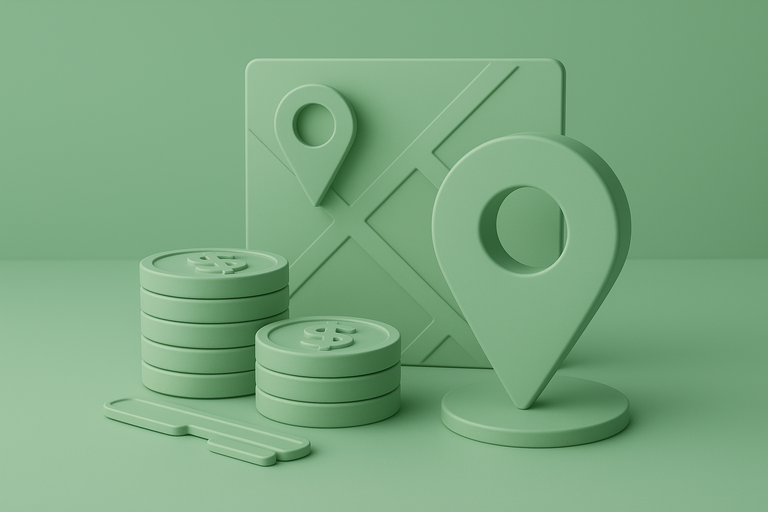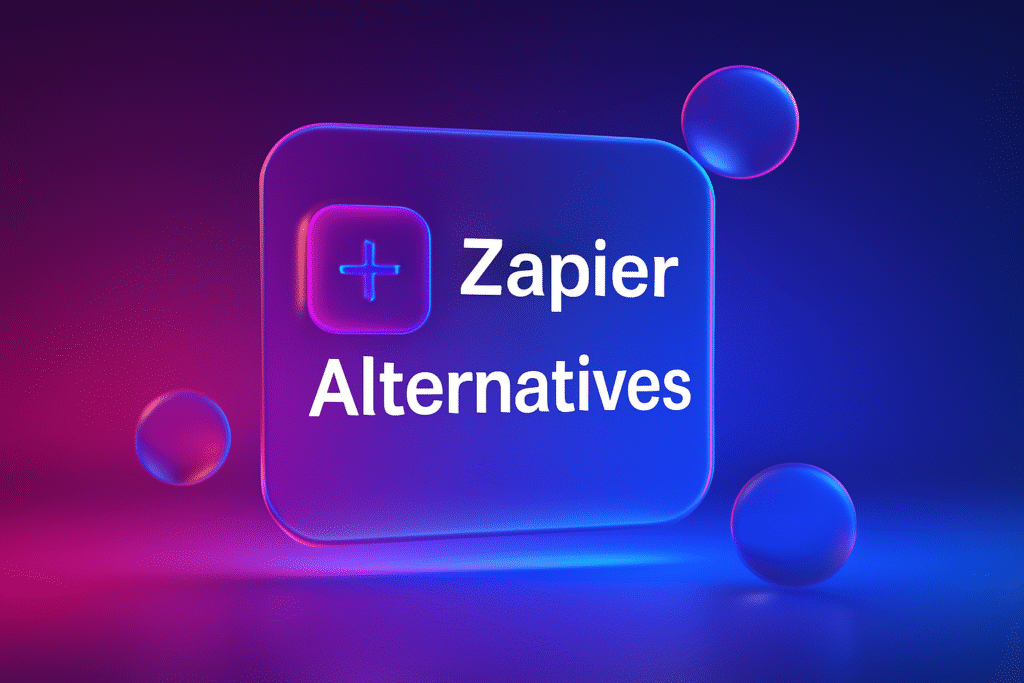Navigating the financial landscape of the Google Maps Platform can feel like charting a course through unknown territory. For businesses large and small, these powerful APIs are the engine behind location-aware applications, from simple store locators to complex logistics networks. However, the move to a pay-as-you-go model has introduced a layer of complexity that requires careful planning and strategic management to avoid unexpected costs.
This comprehensive guide is designed to serve as your definitive map to understanding Google Maps API pricing. We will break down the costs associated with each core service, explore powerful strategies for cost optimization, and evaluate viable alternatives, ensuring you can leverage Google's incredible location intelligence without breaking your budget.
The Foundation: Pay-As-You-Go and the $200 Monthly Credit
At the heart of Google's pricing strategy is a flexible, consumption-based model. You are only billed for the specific APIs you use, providing scalability that can grow with your business. To soften the entry point and encourage development, Google provides every billing account with a recurring $200 free monthly credit.
This credit is not just a one-time offer; it resets every month. For many small businesses or applications with low traffic, this credit may be sufficient to cover all usage, effectively making the service free. It acts as a significant buffer, allowing you to handle thousands of requests before any charges are incurred. Once this credit is exhausted, you are charged according to the specific rates for each API product, a structure we will explore in detail below.
A Detailed Breakdown of Core Service Pricing
The Google Maps Platform is not a single product but a suite of powerful APIs and SDKs, each with its own pricing. Understanding the cost of each component is the first step toward building a cost-effective application. All prices listed are per 1,000 requests and reflect the initial pricing tier.
Maps: The Visual Core of Your Application
The Maps products are what allow you to display rich, interactive, and static maps within your web and mobile applications.
-
Dynamic Maps ($7.00 per 1,000 requests): This is the classic, interactive "slippy map" that users can pan, zoom, and interact with. It is ideal for applications where users need to explore an area, such as a real estate listings site or a travel planner. Every time a map is loaded or instantiated on a webpage or mobile app, it counts as one map load.
-
Static Maps ($2.00 per 1,000 requests): For situations where interactivity is not required, the Static Maps API offers a much more affordable alternative. It generates a simple image of a map based on your specified parameters. This is perfect for confirmation emails with a location thumbnail, contact pages, or simple store locators.
-
Street View ($14.00 per 1,000 requests): Providing users with a 360-degree, ground-level perspective is a powerful way to add context. Each instantiation of a Street View panorama is billed, making it one of the more premium visual services.
Places: Unlocking a World of Location Data
The Places API is arguably one of the most valuable—and potentially expensive—parts of the platform. It provides access to Google's vast database of over 200 million businesses and points of interest worldwide.
-
Place Details ($17.00 per 1,000 requests): When a user needs comprehensive information about a specific location—such as its address, phone number, user ratings, reviews, or opening hours—the Place Details API is the tool. This is a high-value request and is priced accordingly.
-
Place Search ($32.00 per 1,000 requests): This powerful feature allows users to search for places based on text queries (e.g., "pizza in Brooklyn") or proximity ("restaurants near me"). Because it involves a complex search of Google's database, it carries the highest price tag among the common APIs.
-
Autocomplete – Per Request ($2.83 per 1,000 requests): This API predicts place names and addresses as a user types, dramatically improving user experience in search bars and forms. It's priced per request, meaning every keystroke that triggers a new set of predictions could potentially be a billable event without proper implementation (more on this later).
-
Place Photos ($7.00 per 1,000 requests): Accessing the photos associated with a place is billed separately. This allows you to enrich your application with visual content sourced directly from Google's location database.
Routes: Calculating the Best Path
The Routes products are essential for any application involving navigation, logistics, or travel time estimation.
-
Directions API ($5.00 per 1,000 requests): This is the fundamental routing service. It provides turn-by-turn directions for multiple modes of transport, including driving, walking, bicycling, and public transit.
-
Distance Matrix API ($5.00 per 1,000 elements): This API is a workhorse for logistics and planning. It calculates the travel time and distance between multiple origins and destinations. Note the pricing is per "element" (an origin-destination pair), so a single API call with 10 origins and 10 destinations would count as 100 elements.
-
Roads API ($10.00 per 1,000 requests): This specialized API can take a series of GPS coordinates and "snap" them to the most likely roads the vehicle traveled, creating a clean, logical route path.
Geocoding: Translating Addresses and Coordinates
The Geocoding API is a fundamental utility that bridges the gap between human-readable addresses and machine-readable geographic coordinates.
- Geocoding API ($5.00 per 1,000 requests): This service converts addresses (e.g., "1600 Amphitheatre Parkway, Mountain View, CA") into latitude and longitude coordinates, and vice-versa (reverse geocoding). It is essential for placing markers on a map or determining a user's address from their device's location.
Advanced Cost Management and Optimization Strategies
Simply knowing the prices is not enough. To truly control your Google Maps Platform spend, you must actively manage and optimize your usage. Implementing the following strategies can lead to substantial savings.
1. Set Budgets, Alerts, and Quotas
Your first line of defense against surprise bills is in the Google Cloud Console.
-
Budgets and Alerts: You can set a monthly budget for your Maps project. While this will not stop your services from running, Google will send email notifications to your billing administrators when your spending reaches certain percentages (e.g., 50%, 90%, and 100%) of your budget. This gives you an early warning to investigate any unexpected spikes in usage.
-
Usage Quotas: For more direct control, you can set hard daily quotas on each API. For example, you could cap the Geocoding API at 10,000 requests per day. Once this limit is reached, any further requests will fail until the next day. This is a powerful tool to prevent runaway costs from a software bug or malicious use, but it must be used carefully to avoid disrupting your service for legitimate users.
2. Leverage Tiered Pricing for Volume Discounts
Google rewards high-volume usage with automatic discounts. As your number of requests for a specific API SKU increases within a month, the price per 1,000 requests decreases.
For example, for Place Details:
- 0 – 100,000 requests: $17.00 per 1,000
- 100,001 – 500,000 requests: $13.60 per 1,000
- 500,001+ requests: Contact sales for custom pricing
This tiered structure means that as your application scales and becomes more successful, your per-unit cost naturally declines. For enterprises with massive usage, negotiating a custom pricing plan directly with the Google sales team can unlock even deeper discounts.
3. Implement Technical Optimizations
How your developers implement the APIs has a direct and significant impact on your final bill.
-
Use Field Masking (Places API): When you request Place Details, the default response includes a wealth of data. However, you are billed the same whether you use one piece of data or all of it. Field masking allows you to specify exactly which data fields you need (e.g.,
formatted_phone_number,rating). This doesn't change the cost of the Place Details call itself, but it can help you avoid making separate, costly calls for different data points. The biggest saving comes from requesting Basic Data fields which are billed at a lower rate than Atmosphere or Contact data fields. -
Optimize Autocomplete with Session Tokens: Without session tokens, every character a user types in a search box could trigger a separate, billable Autocomplete request. By implementing session tokens, you tell Google to group a series of typed queries into a single user "session." You are then billed for just one Autocomplete session, which includes all the intermediate requests, plus the final Place Details request if the user selects a location. This is one of the single most effective ways to reduce Places API costs.
-
Cache Your Results: If you frequently request the same static information, such as the coordinates for your office headquarters, there is no need to call the Geocoding API every time. The Google Maps Platform Terms of Service allow for temporary caching of results. You can store the latitude and longitude and reuse them, saving on unnecessary API calls. Be sure to respect the terms regarding cache duration and data freshness.
-
Debounce User Input: This developer technique complements session tokens. Instead of firing an API request on every single keystroke, you can program your search field to wait for a brief pause in typing (e.g., 300 milliseconds). This prevents rapid-fire requests from users who type quickly and significantly reduces the total number of calls made.
Evaluating Google Maps Alternatives
While Google Maps is the undisputed leader in data accuracy and feature richness, it is not the only option. For certain use cases, or for businesses on a very tight budget, exploring alternatives can be a smart strategic move.
-
Mapbox: A powerful and highly customizable platform that is a favorite among developers who want to create unique and beautifully designed maps. Its pricing is also usage-based and can be competitive with Google's for certain API calls.
-
Radar: A rising competitor that focuses heavily on geofencing, trip tracking, and geocoding. Radar often positions itself as a more cost-effective solution for specific services, claiming its Geocoding API can be up to 90% cheaper than Google's.
-
Open-Source Solutions (Leaflet & OpenStreetMap): For the ultimate in cost savings and control, you can turn to the open-source community. OpenStreetMap (OSM) is a collaborative, free, and editable map of the world. Libraries like Leaflet.js allow you to display OSM data on your site. The trade-off is that you are responsible for hosting the map tiles and data, which requires significant development and infrastructure resources. This path offers freedom from API fees but comes with its own operational costs.
Real-World Cost Scenarios
Let's ground this information in three practical examples.
Scenario 1: The Local Bakery's Website
- Needs: A simple, non-interactive map on their "Contact Us" page.
- Implementation: One Static Map API call per page load.
- Monthly Traffic: 10,000 page views.
- Cost Analysis: 10,000 Static Map requests cost $20. This is well within the $200 free monthly credit.
- Final Cost: $0
Scenario 2: A Growing E-commerce App with Store Pickup
- Needs: A store locator where users can search for their nearest store.
- Implementation: Autocomplete for the search bar, Place Search to find nearby stores, and Dynamic Maps to display results.
- Monthly Usage: 50,000 Autocomplete sessions, 25,000 Place Search queries, 50,000 Dynamic Map loads.
- Cost Analysis:
- Autocomplete: 50k sessions @ $17.00/1k = $850
- Place Search: 25k queries @ $32.00/1k = $800
- Dynamic Maps: 50k loads @ $7.00/1k = $350
- Total Estimated Cost: $2,000. After the $200 credit, the final bill would be approximately $1,800.
Scenario 3: A Large-Scale Logistics and Delivery Platform
- Needs: Real-time driver tracking, route optimization, and delivery ETAs.
- Implementation: Heavy use of the Directions API, Distance Matrix API, and Geocoding API.
- Monthly Usage: 2 million Directions requests, 500,000 Geocoding requests.
- Cost Analysis:
- Directions: 2M requests (falls into volume discount tiers) ≈ $8,000 – $9,000
- Geocoding: 500k requests (falls into volume discount tier) ≈ $2,240
- Total Estimated Cost: Roughly $10,000 – $11,000 per month. This is where negotiating an enterprise license with Google becomes essential.
Final Recommendations
The Google Maps Platform is an indispensable tool for the modern digital business. Its power is undeniable, but so is its potential cost. To succeed, you must approach its use with a clear and proactive strategy.
- Audit Your Usage: Before you do anything else, use the Google Cloud Console to understand exactly which APIs you are using and in what volume. Identify your most expensive services.
- Implement a "Cost of Goods Sold" Mindset: Treat your API calls as a direct cost associated with a user action. Does the value a feature provides justify its API cost? This mindset can help you make tough but necessary product decisions.
- Empower Your Developers: Ensure your engineering team understands the cost implications of their implementation choices. Educate them on best practices like session tokens, debouncing, and caching.
- Never Stop Optimizing: Cost management is not a one-time task. Regularly review your usage reports, set tighter alerts, and always be on the lookout for new ways to deliver the same great user experience more efficiently.
By combining a deep understanding of the pricing structure with diligent management and smart technical optimization, you can harness the full power of Google Maps to drive your business forward, confidently and cost-effectively.
Frequently Asked Questions (FAQ)
1. What happens if I go over the $200 free monthly credit?
Once your usage costs exceed $200 in a billing cycle, you will automatically begin to be charged for any additional requests at the standard, pay-as-you-go rates for each API. Your service will not be interrupted as long as you have a valid payment method on file.
2. How exactly are the volume discounts applied?
The discounts are applied automatically and incrementally within a single billing month. For example, your first 100,000 Dynamic Map loads are billed at $7.00 per 1,000. Your 100,001st load and all subsequent loads up to 500,000 are then billed at the lower rate of $5.60 per 1,000.
3. Is there a free trial in addition to the monthly credit?
Yes. New Google Cloud Platform customers, which includes the Maps Platform, are typically eligible for a one-time $300 free credit that can be used over 90 days. This is separate from and in addition to the recurring $200 monthly credit.
4. How can I estimate my costs before I launch my application?
Google provides a helpful Pricing Calculator that allows you to input your expected number of requests for each API and receive a monthly cost estimate. This is an invaluable tool for planning and budgeting.
5. Why did Google Maps API pricing seem to get so much more expensive after 2018?
In 2018, Google unified its various plans into a single pay-as-you-go model. This change also significantly reduced the free usage limits that existed under the old "Standard Plan." While this made pricing more complex and potentially more expensive for high-volume users who were previously on the free tier, it also simplified the product offerings and introduced the recurring $200 monthly credit.
Resources
- Google Maps Platform Pricing Table: https://developers.google.com/maps/billing/gmp-billing
- Google Maps Platform Pricing Calculator: https://cloud.google.com/maps-platform/pricing/calculate
- Understanding Places API Usage and Billing: https://developers.google.com/maps/documentation/places/web-service/usage-and-billing
- Cost Optimization Best Practices: https://developers.google.com/maps/optimization-guide
Feeling overwhelmed by API complexity and costs? Discover how the ThinkPeak.ai platform can help you build, manage, and optimize your AI-powered workflows with intuitive low-code tools. Streamline your integrations and take control of your operational spending. Start your journey with ThinkPeak.ai today!



